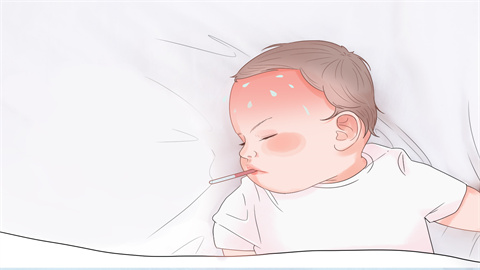How to diagnose infantile急疹 (roseola)
Generally, diagnosing infantile roseola can be achieved through a comprehensive consideration of typical fever characteristics, timing and morphology of the rash, accompanying symptoms, age-specific features, and disease progression patterns. Detailed analysis is as follows:

1. Typical fever characteristics: Fever manifestation should be the first consideration during diagnosis. Infantile roseola often begins with a sudden high fever, with body temperature rapidly rising to 39°C-40°C. The high fever typically lasts for 3-5 days; during this period, antipyretic medications may temporarily reduce the temperature, but it tends to rise again once the medication's effect subsides.
2. Timing and morphology of rash appearance: The appearance of the rash after fever subsides serves as an important diagnostic criterion. Usually within 1-2 days after the body temperature suddenly returns to normal, light red maculopapular rashes first appear on the infant's neck and trunk, subsequently spreading to the face and extremities. The rash is non-pruritic and gradually fades within 1-2 days.
3. Accompanying symptoms: During the illness, infants generally do not exhibit severe accompanying symptoms. They may only show mild respiratory symptoms such as slight coughing and sneezing or mild gastrointestinal discomfort such as loose stools and slight vomiting, without severe symptoms like intense vomiting, diarrhea, or difficulty breathing.
4. Age-specific features: Infantile roseola commonly occurs in infants and toddlers aged between 6 months and 2 years. Babies within this age range have immature immune systems, making them more susceptible to infection with human herpesvirus type 6 or 7, which can lead to roseola.
5. Disease progression patterns: Observing the progression of the illness is also important for diagnosis. Infantile roseola generally follows a clear progression pattern consisting of a fever phase, a rash phase, and a recovery phase. The fever phase lasts for 3-5 days, followed by a rash phase lasting 1-2 days. Throughout the entire course of the illness, the infant's general condition significantly improves after the fever subsides, and recovery is usually rapid without complications.
During the observation process, parents can make a comprehensive judgment by recording changes in body temperature, timing and appearance of the rash, the baby's age, and mental status. It is important to maintain good indoor ventilation and ensure adequate hydration to help the baby feel more comfortable throughout the illness.




